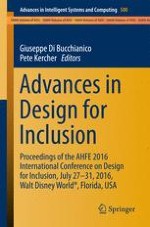2016 | OriginalPaper | Buchkapitel
Making Voting by Mail Usable, Accessible and Inclusive
verfasst von : Kathryn Summers, Whitney Quesenbery, Amy Pointer
Erschienen in: Advances in Design for Inclusion
Aktivieren Sie unsere intelligente Suche, um passende Fachinhalte oder Patente zu finden.
Wählen Sie Textabschnitte aus um mit Künstlicher Intelligenz passenden Patente zu finden. powered by
Markieren Sie Textabschnitte, um KI-gestützt weitere passende Inhalte zu finden. powered by
